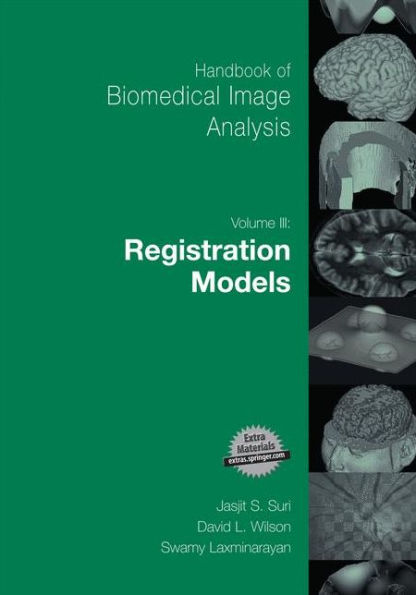Home
Handbook of Biomedical Image Analysis: Volume 3: Registration Models / Edition 1
Barnes and Noble
Handbook of Biomedical Image Analysis: Volume 3: Registration Models / Edition 1
Current price: $449.99


Barnes and Noble
Handbook of Biomedical Image Analysis: Volume 3: Registration Models / Edition 1
Current price: $449.99
Size: OS
Loading Inventory...
*Product information may vary - to confirm product availability, pricing, shipping and return information please contact Barnes and Noble
Our goal is to develop automated methods for the segmentation of thr- dimensional biomedical images. Here, we describe the segmentation of c- focal microscopy images of bee brains (20 individuals) by registration to one or several atlas images. Registration is performed by a highly parallel imp- mentation of an entropy-based nonrigid registration algorithm using B-spline transformations. We present and evaluate different methods to solve the cor- spondence problem in atlas based registration. An image can be segmented by registering it to an individual atlas, an average atlas, or multiple atlases. When registering to multiple atlases, combining the individual segmentations into afinal segmentation can be achieved by atlas selection, ormulticlassifier decision fusion. We describe all these methods and evaluate the segmentation accuracies that they achieve by performing experiments with electronic phantoms as well as by comparing their outputs to a manual gold standard. The present work is focused on the mathematical and computational t- ory behind a technique for deformable image registration termed Hyperelastic Warping, and demonstration of the technique via applications in image regist- tion and strain measurement. The approach combines well-established prin- ples of nonlinear continuum mechanics with forces derived directly from thr- dimensional image data to achieve registration. The general approach does not require the definition of landmarks,ducials, or surfaces, although it can - commodate these if available. Representative problems demonstrate the robust and flexible nature of the approach. Three-dimensional registration methods are introduced for registering MRI volumes of the pelvis and prostate. The chapter first reviews the applications, xi xii Preface challenges,and previous methods of image registration in the prostate.








